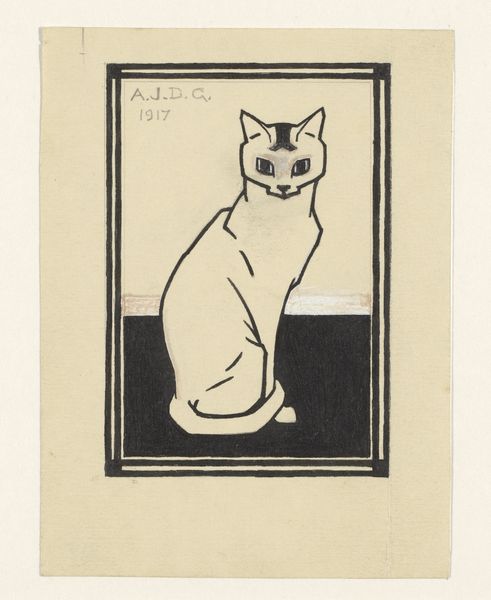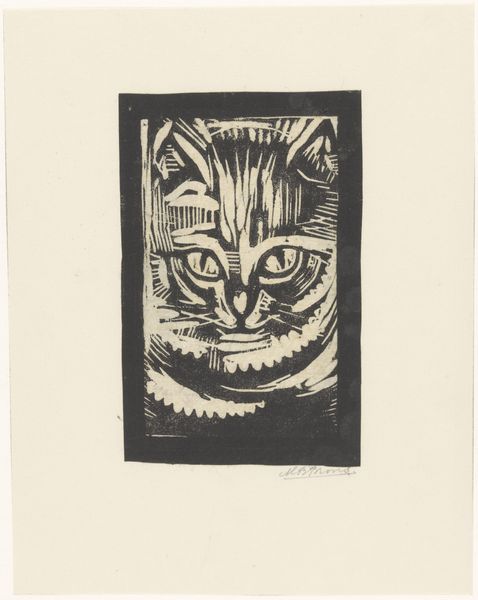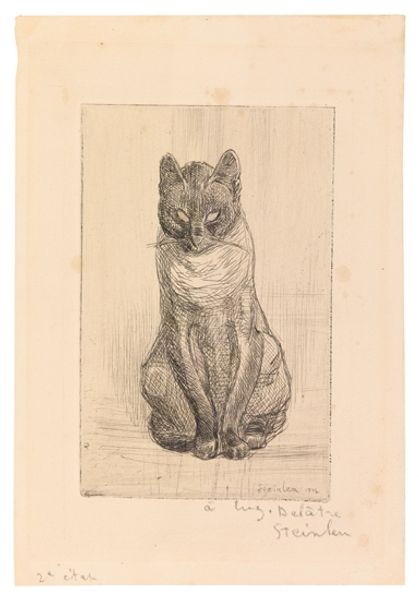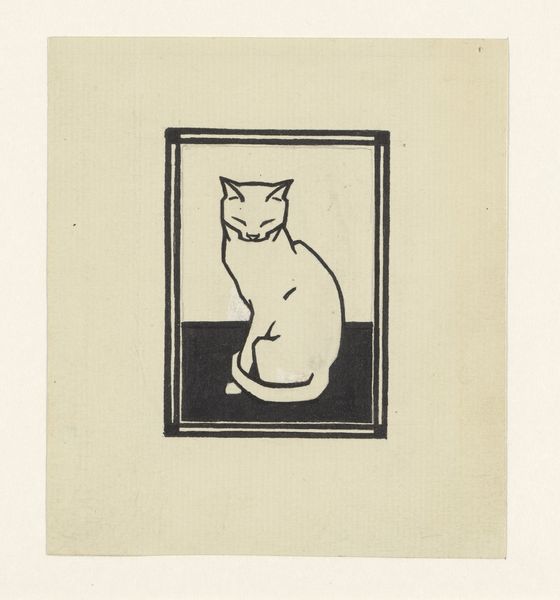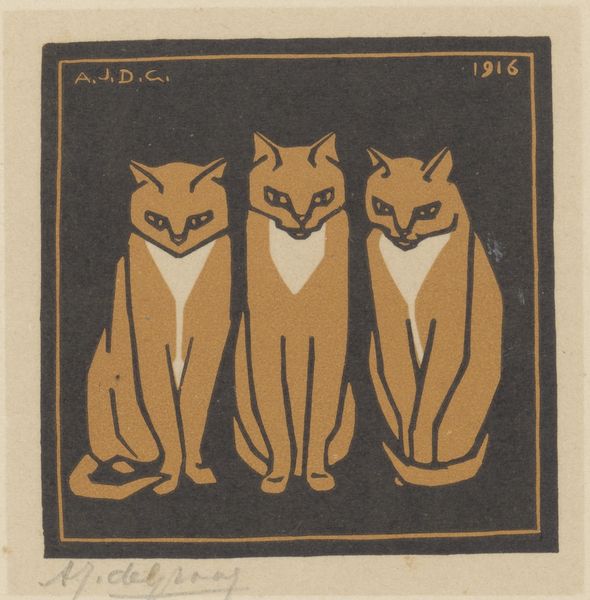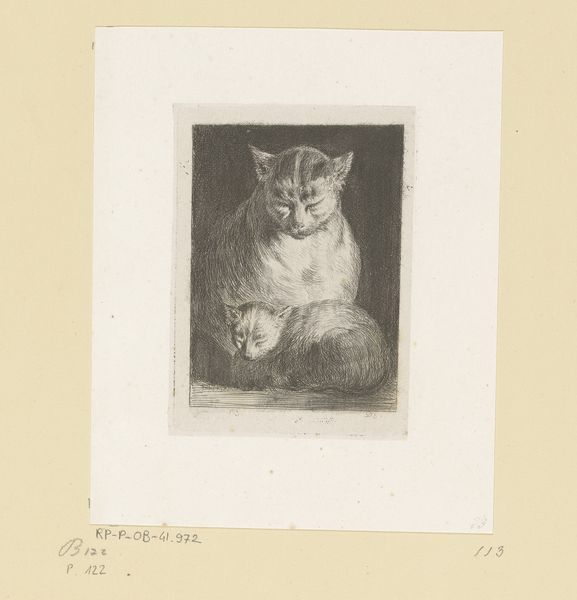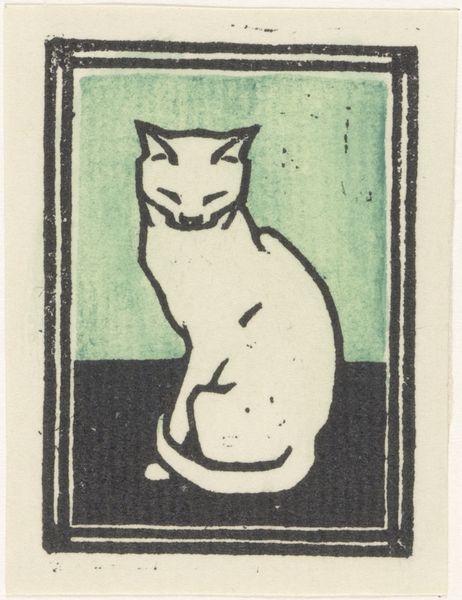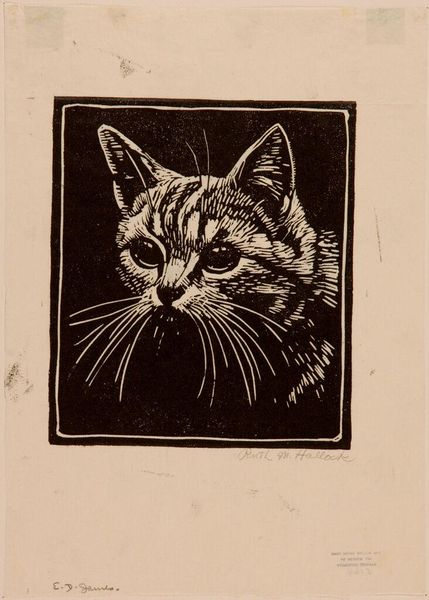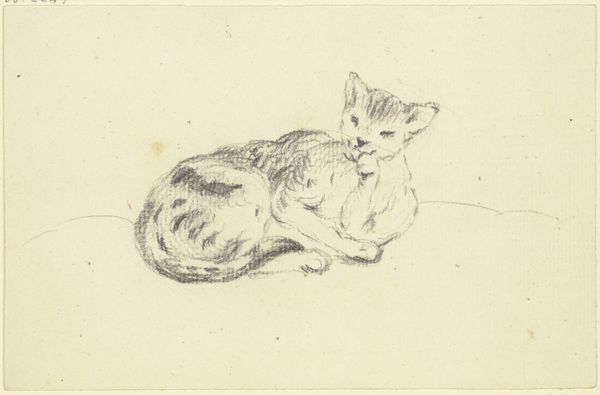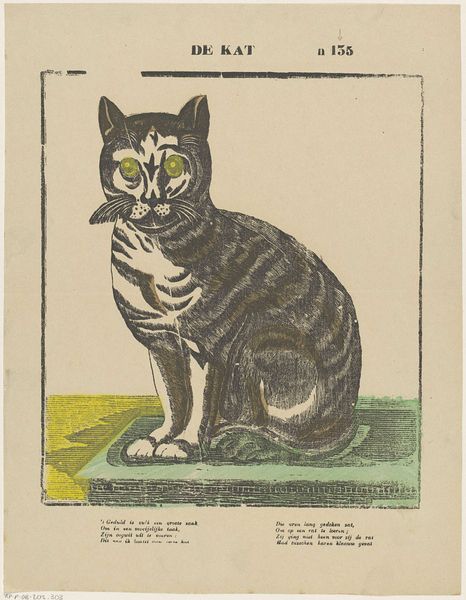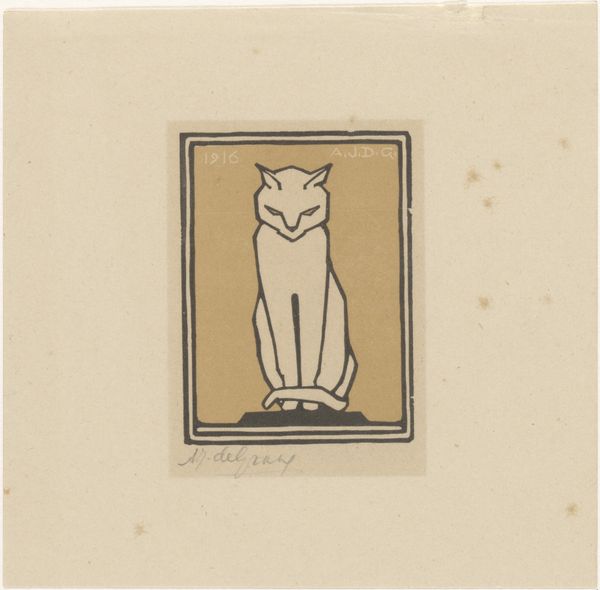
print, woodcut
#
art-nouveau
#
animal
# print
#
figuration
#
woodcut
Dimensions: height 190 mm, width 155 mm
Copyright: Rijks Museum: Open Domain
Curator: We’re looking at "Zittende kat," or "Sitting Cat," a woodcut print created in 1918 by Dutch artist Julie de Graag. Editor: It strikes me immediately as austere. The stark contrast of colors, the rigid pose of the cat...it almost feels less like a domestic animal and more like an emblem. Curator: Yes, that controlled palette and simplified form are characteristic of de Graag's style and reflect elements of the Art Nouveau movement, which embraced decorative and stylized natural forms. Consider the intricate swirling patterns of the cat’s fur— they don't mimic reality but create a rhythmic visual interest. Editor: And in the context of 1918, toward the end of the First World War, there could be readings about national identity. Cats often symbolized independence, something the Netherlands sought to preserve amidst European turmoil. Plus, women artists like De Graag were claiming new space for themselves, demanding to be seen and heard. This image feels self-possessed, perhaps quietly defiant. Curator: Certainly. And let's examine how the artist uses the woodcut medium itself. Notice the crisp lines and flat planes of color. Each mark is deliberate, serving the overall composition and lending that very graphic, declarative quality. The limitations of the medium also contribute to the cat's abstracted, almost iconic form. Editor: What I appreciate most is how De Graag utilizes negative space. The dark background really pushes the lighter figure of the cat forward, making it very present despite its simple contours. The single horizontal line separating the cat from the background makes it look as if it were posed, and the dark void contrasts with the detailed linework of the animal itself. Curator: It is an image filled with such apparent simplicity but rich in its sophisticated formalism. De Graag masterfully balanced decorative sensibility with restraint, creating a work that still captivates today. Editor: Indeed, placing it within its social moment highlights not just its aesthetic accomplishment, but its potential subtle message of autonomy and quiet resistance in a world consumed by conflict and, maybe even a call for attention for a generation of woman artists.
Comments
No comments
Be the first to comment and join the conversation on the ultimate creative platform.
